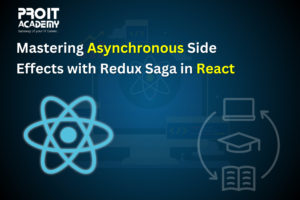Difference between Python and PySpark
PySpark is an API written for the Spark framework to use Python. As everybody knows, Spark is a computational engine that runs on big data, and Python is a language of programming.
Why Python?
To remain relevant to their fields, data scientists have to study a lot of languages. Python, Java, R, and Scala are a few. For data scientists, Python is the most common language. Learning Python will help you gain information and certainly lead you a long way. Python is such a strong and easier to understand and use language. There are many other domains, including machine learning, artificial intelligence, and Python, not just data science. If wants to learn, Many Institute offers Job Oriented Courses for all these domains.
Python is a powerful language with many attractive characteristics such as ease of learning, simplified syntax, improved readability, etc. It’s an object-oriented, interpreted, functional, procedural, and procedural language. Python’s most robust feature is that it is both object-oriented and functionally oriented, giving programmers a lot of versatility and freedom when thinking about programming as both data and features. In other words, any programmer will consider structuring data and invoking actions to solve a problem. Object-based data structuring is one thing, whereas functional-oriented data handling is another.
Become a python developer at Python Classes in Pune.
Why Spark?
You will work with any Data Frameworks such as Hadoop or Spark as a data computing framework that will allow you to manage the data more efficiently. Spark replaces Hadoop due to its ease of use and Speed. Spark will also integrate with Scala, Python, Java, etc. And Python is the best for Big Data for various reasons.
PySpark is nothing, just a Python API, but both Python and Spark can use now. You have to know Spark and Python to work with PySpark. PySpark requires data scientists working in Scala, which isn’t comfortable because Spark is written in Scala. The only way you have a programmer in Python who would like to work with RDDs without learning a new language.
PySpark
Scala is the programming language used to create Apache Spark. PySpark is a Python API for Spark designed to facilitate the cooperation between Apache Spark and Python. PySpark also enables you to communicate in Apache Spark and Python with Resilient Distributed Datasets. It is done in the Py4j library.
Py4J is a common library built into PySpark and allows Python to interact dynamically with JVM objects. PySpark comes with several libraries that help you write efficient programs. There are also a variety of external collections that are compatible. Here are a few:
PySparkSQL
A library of PySpark to use SQL processing for a large number of structured or semistructured data. We can use SQL queries with PySparkSQL as well. It’s even possible to connect it to Apache Hive. You may also use HiveQL. PySparkSQL is a PySpark core wrapper. The DataFrame table represents organized data similar to the table in a relational database management system, implemented by PySparkSQL.
MLlib
MLlib is a PySpark Wrapper that is Spark’s library for machine learning (ML). This library uses the parallel technique of data storage and data processing. The MLlib library’s machine-learning API is simple to use. MLlib supports multiple classifications, regression, clustering, collaborative filtering, size reduction, and underlying primitive optimization techniques.
GraphFrames
GraphFrames is a graph processing library that uses the core of PySpark and PySparkSQL to collect APIs for the efficiency of graph analysis. It is optimized for high-speed computing.
The following are the Difference between Python and pyspark
Python
• Language of programming interpreted Used in artificial intelligence, machine learning, Big Data, respectively.
• Prerequisites: The fundamentals of any understanding of programming are a significant benefit but are not compulsory
• Have a standard library that supports a broad range of features such as databases, automation, text processing, and scientific computing.
• Python licensed
Pyspark
• A Spark python-support tool
• Used mainly in the big data
• Prerequisites- Spark and Python knowledge is essential.
• It uses an API in Python called the library Py4j
• Apache Spark Foundation developed and licensed

Book Your Time-slot for Counselling !
Benefits of using PySpark
In-Memory Computation in Spark
It lets you improve the processing speed with in-memory processing. The best thing is that the data is cached to don’t get the data every time the time is saved from the disk. PySpark has a DAG execution engine that makes in-memory computing and acyclic data flow easier to achieve fast speeds for those who don’t know.
Swift Processing
When using PySpark, high data processing speeds on the disk are likely to be about ten times faster and, in the memory, 100x faster. It will be achievable to reduce read-write numbers to disk.
Dynamic in Nature
It lets you create a parallel application as Spark offers 80 high-level operators because of its dynamic nature.
Fault Tolerance in Spark
By Spark abstraction-RDD, PySpark offers fault tolerance. The programming language is specially developed to address the malfunction of any cluster worker’s node to reduce data loss to zero.
Real-Time Stream Processing
In terms of real-time stream processing, PySpark is known and better than other languages. Hadoop MapReduce’s problem is that the data gathered can be managed, but not the actual data. However, this problem has been greatly minimized with PySpark Streaming.
When is it Best to use PySpark?
The distributed computing power of PySpark can be used by data scientists and other data analyst professionals. And PySpark is better done by making the workflow unbelievably easy, like never before. Data scientists use PySpark to build an analytical application in Python, collect and process data, and return the consolidated data. It is not arguable that PySpark is used for phases of creation and evaluation. However, when drawing a heat map, things get tangled to see how much the model predicts people’s preferences.
Running with PySpark
By combining the local and remote transition operations with the maintenance of computer cost control, PySpark will significantly speed up the analysis. Furthermore, the language allows data scientists to prevent large sets of data from being downsampled. For tasks such as designing a recommendation or training a machine learning system, PySpark should be considered. It is critical because distributed computing makes it possible to add different forms of data to existing data sets and provides examples like combining share price data with weather data.
Programming with PySpark:
RDD: Resilient Distributed Datasets
There are essentially fault-tolerant data sets that are distributed in nature. Two kinds of data operations exist transformations and actions. The changes operate on the data collection and apply several transform methods to them. And PySpark’s actions to work on them are applied.
Data frames:
Data Frame is a collection of structured/semistructured column data. The software supports various information formats such as JSON, CSV, existing RDDs, and many other storage systems. Python can load and process the data by filtering, sorting, and distributing in nature which is unchanged and distributed.
Machine learning:
In machine learning, there are two major categories of algorithms: transformers and estimators. Transforms the input and modifies it into output data sets using a transform() function. Estimators are an algorithm that uses a fit() function to generate a trained output model.
Without Pyspark, a personalized estimator or transformer must use for Scala’s implementation. Now it is simpler to use mixing classes with the help of PySpark instead of with scala implementation.
Who can learn PySpark?
On data science and machine learning, Python is becoming a solid language. You can work with Spark with Python through its library, Py4j. Python is a language often used in machine and data science.
The prerequisites are
• Expertise in Python programming
• Big data and platform knowledge such as Spark
• The right candidate for PySpark wants to work with big data.
Advantages of Python
• Read, learn, and write easily
• Python is an advanced language of programming. The coding is simple to read and understand
• Python is so easy to collect and understand, so many recommend Python to beginner students.
• To do the same role as other key languages such as C/C++ and Java, you need fewer lines of code.
• Improved Productivity
• The Python language is very productive. Due to Python’s simplicity, developers will concentrate on solving the problem.
• They may not have to spend very much time learning the programming language syntax or behavior.
Interpreted Language
Python is a language that implies that Python specifically runs the code line by line. In the event of a mistake, it prevents further execution and reports the occurrence of the error. Python has only one error, even though the program has several errors.
It simplifies debugging.
Dynamically Typed
Until we execute the code, Python does not know the variable type. During execution, the data type is automatically assigned. The programmer need not care about the declaration of variables and the types of data.
Free and Open-Source
The OSI is provided Python’s open-source license. It can be used and distributed widely. You can download, change and even share the source code of your Python version. It is helpful for organizations, who would like to change those behaviors and use a development version.
Vast Libraries Support
The Python standard library is extensive, and almost all the functions you need to do your work are available. Therefore, you don’t need to depend on external libraries.
Portability
You must change your code to run the program on various platforms in several languages like C/C++.
For Python, this is not the same just once you write and run it anywhere.
However, please take note not to include system-dependent features.
Disadvantages of Python
Slow Speed
Python is a language that has been interpreted and is a dynamic language. Code execution is also slowly carried out line-by-line. Python’s dynamic nature also causes Python to speed up, as it has to do the extra work while code is executed.
Not Memory Efficient
To make the developer convenient, Python must make a small compromise. A considerable amount of memory is used in the Python programming language. When creating applications, we like to optimize the memory, which can be a drawback.
Weak in Mobile Computing
In server-side programming, Python is commonly used. For the following reason, Python is not visible on mobile applications.
Python is not efficient for memory and has slow processing power than other languages.
Database Access
Programming is fast and without stress in Python. However, it lacks when you deal with the database. The Python database access layer is underdeveloped and straightforward compared to popular technologies such as ODBC and JDBC.
Big companies need smooth interaction with complex legacy data, and so Python is rarely used in companies.
Runtime Errors
Because Python is known as a dynamically typed language, a variable’s data type can always change.
A variable that contains integer numbers will include a string that can lead to runtime errors in the future. Thus, Python programmers require the application to be thoroughly tested.

Do you need help to create your career path ?
Advantages of PySpark
Simple to write
We can say that for simple problems, it’s straightforward to write parallel code.
Framework handles errors
While synchronization points and errors are concerned, the framework can handle them comfortably.
Algorithms
In Spark, several useful algorithms have been implemented.
Libraries
Python is much simpler than the existing libraries compared with Scala. Since many libraries have too many data science components from R transferred to Python, this does not happen in Scala.
Good Local Tools
Scala does not have decent visualization tools, but Python does have some good local tools.
Learning Curve
The learning curve in Python is smaller than in Scala.
Ease of use
Python is simple to use in comparison with Scala.
Disadvantages of PySpark
Difficult to express
It is often complicated when expressing a problem in MapReduce format.
Less Efficient
Pythons are less powerful than other programming models when we need plenty of communication, such as MPI.
Slow
Python’s output is poor compared with Scala for Spark Jobs. Around ten times slower. It means Python is slower than Scala if we want heavy computing.
Immature
Python supports Spark Streaming in Spark 1.2 but is currently not as completely advanced as Scala. So, if we need streaming, we have to go to Scala.
Cannot use internal functioning of Spark
Because Spark is entirely written in Scala, we need to work with Scala if we want or need to modify Spark’s internal function for our work. Python is unavailable for our project. We can build a new RDD with Scala at the Spark core, but not with Python.












